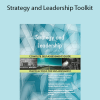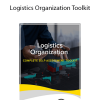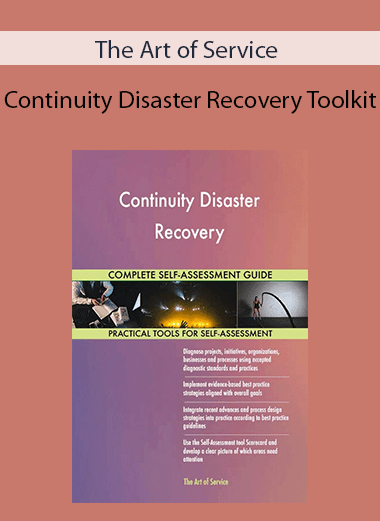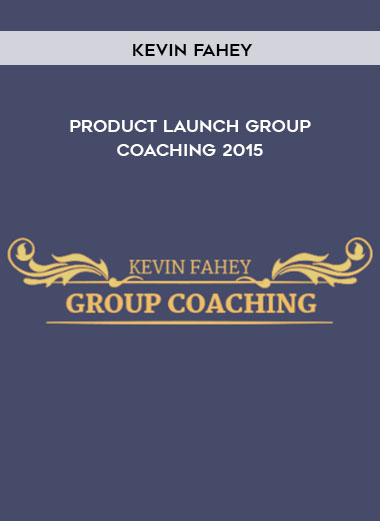The Art of Service – Continuity Disaster Recovery Toolkit
$249 Original price was: $249.$59Current price is: $59.
The Art of Service – Continuity Disaster Recovery Toolkit
Product Delivery : You will receive a receipt with download link through email
The Art of Service – Continuity Disaster Recovery Toolkit
Save time, empower your teams and effectively upgrade your processes with access to this practical Continuity Disaster Recovery Toolkit and guide. Address common challenges with best-practice templates, step-by-step work plans and maturity diagnostics for any Continuity Disaster Recovery related project.
Download the Toolkit and in Three Steps you will be guided from idea to implementation results.
The Toolkit contains the following practical and powerful enablers with new and updated Continuity Disaster Recovery specific requirements:
STEP 1: Get your bearings
Start with…
The latest quick edition of the Continuity Disaster Recovery Self Assessment book in PDF containing 49 requirements to perform a quickscan, get an overview and share with stakeholders.
Organized in a data driven improvement cycle RDMAICS (Recognize, Define, Measure, Analyze, Improve, Control and Sustain), check the…
Example pre-filled Self-Assessment Excel Dashboard to get familiar with results generation
Then find your goals…
STEP 2: Set concrete goals, tasks, dates and numbers you can track
Featuring 997 new and updated case-based questions, organized into seven core areas of process design, this Self-Assessment will help you identify areas in which Continuity Disaster Recovery improvements can be made.
Examples; 10 of the 997 standard requirements:
Do you have disaster recovery, business continuity or incident response plans and procedures to respond if your systems or the already stated of your vendors are intruded, compromised or disrupted?
Has your organization addressed cyber terrorism in your Business Continuity Management Program and related Business Continuity Plans, Disaster Recovery Plans, and/or Crisis Management Plans?
Has your organization experienced an incident or interruption in the past year that caused you to activate continuity plans, crisis management plans or disaster recovery plans?
Can people fill the gap to mitigate risk during technology failures and how should your organization view people as part of disaster recovery and business continuance process?
Does your organization anticipate that contracts resulting from an RFP will be utilized immediately, or upon your organizations need for services following future disasters?
What are the key/distinguishing characteristics and objectives of Emergency Management, Crisis Management, Disaster Recovery Planning and Business Continuity Management?
Will the service allow data replication and recovery into existing Dedicated or Virtual Private Cloud offerings if a customer has already purchased either (or both)?
Does the disaster recovery plan provide for recovery of the systems within the periods of time specified within the metrology procedure / service level procedures?
Does your organization strive to maintain and foster relationships with external departments to ensure the recovery of your organization during a disaster?
How frequently does your organization carry out full scenario testing of its disaster recovery plan involving relevant people, processes and technologies?
Complete the self assessment, on your own or with a team in a workshop setting. Use the workbook together with the self assessment requirements spreadsheet:
The workbook is the latest in-depth complete edition of the Continuity Disaster Recovery book in PDF containing 997 requirements, which criteria correspond to the criteria in…
Your Continuity Disaster Recovery self-assessment dashboard which gives you your dynamically prioritized projects-ready tool and shows your organization exactly what to do next:
The Self-Assessment Excel Dashboard; with the Continuity Disaster Recovery Self-Assessment and Scorecard you will develop a clear picture of which Continuity Disaster Recovery areas need attention, which requirements you should focus on and who will be responsible for them:
Shows your organization instant insight in areas for improvement: Auto generates reports, radar chart for maturity assessment, insights per process and participant and bespoke, ready to use, RACI Matrix
Gives you a professional Dashboard to guide and perform a thorough Continuity Disaster Recovery Self-Assessment
Is secure: Ensures offline data protection of your Self-Assessment results
Dynamically prioritized projects-ready RACI Matrix shows your organization exactly what to do next:
STEP 3: Implement, Track, follow up and revise strategy
The outcomes of STEP 2, the self assessment, are the inputs for STEP 3; Start and manage Continuity Disaster Recovery projects with the 62 implementation resources:
62 step-by-step Continuity Disaster Recovery Project Management Form Templates covering over 1500 Continuity Disaster Recovery project requirements and success criteria:
Examples; 10 of the check box criteria:
Human Resource Management Plan: Are changes in deliverable commitments agreed to by all affected groups & individuals?
Cost Management Plan: Has your organization readiness assessment been conducted?
Probability and Impact Assessment: Can the risk be avoided by choosing a different alternative?
Procurement Management Plan: Are post milestone Continuity Disaster Recovery project reviews (PMPR) conducted with your organization at least once a year?
Activity Duration Estimates: Is corrective action taken to bring Continuity Disaster Recovery project performance into line with the Continuity Disaster Recovery project plan?
Executing Process Group: What are the key components of the Continuity Disaster Recovery project communications plan?
Stakeholder Management Plan: Has the scope management document been updated and distributed to help prevent scope creep?
Quality Audit: Have the risks associated with the intentions been identified, analyzed and appropriate responses developed?
Quality Audit: Is refuse and garbage adequately stored and disposed of with sufficient frequency to prevent contamination?
Scope Management Plan: Do you document disagreements and work towards resolutions?
Step-by-step and complete Continuity Disaster Recovery Project Management Forms and Templates including check box criteria and templates.
1.0 Initiating Process Group:
1.1 Continuity Disaster Recovery project Charter
1.2 Stakeholder Register
1.3 Stakeholder Analysis Matrix
GET The Art of Service – Continuity Disaster Recovery Toolkit download
2.0 Planning Process Group:
2.1 Continuity Disaster Recovery project Management Plan
2.2 Scope Management Plan
2.3 Requirements Management Plan
2.4 Requirements Documentation
2.5 Requirements Traceability Matrix
2.6 Continuity Disaster Recovery project Scope Statement
2.7 Assumption and Constraint Log
2.8 Work Breakdown Structure
2.9 WBS Dictionary
2.10 Schedule Management Plan
2.11 Activity List
2.12 Activity Attributes
2.13 Milestone List
2.14 Network Diagram
2.15 Activity Resource Requirements
2.16 Resource Breakdown Structure
2.17 Activity Duration Estimates
2.18 Duration Estimating Worksheet
2.19 Continuity Disaster Recovery project Schedule
2.20 Cost Management Plan
2.21 Activity Cost Estimates
2.22 Cost Estimating Worksheet
2.23 Cost Baseline
2.24 Quality Management Plan
2.25 Quality Metrics
2.26 Process Improvement Plan
2.27 Responsibility Assignment Matrix
2.28 Roles and Responsibilities
2.29 Human Resource Management Plan
2.30 Communications Management Plan
2.31 Risk Management Plan
2.32 Risk Register
2.33 Probability and Impact Assessment
2.34 Probability and Impact Matrix
2.35 Risk Data Sheet
2.36 Procurement Management Plan
2.37 Source Selection Criteria
2.38 Stakeholder Management Plan
2.39 Change Management Plan
3.0 Executing Process Group:
3.1 Team Member Status Report
3.2 Change Request
3.3 Change Log
3.4 Decision Log
3.5 Quality Audit
3.6 Team Directory
3.7 Team Operating Agreement
3.8 Team Performance Assessment
3.9 Team Member Performance Assessment
3.10 Issue Log
4.0 Monitoring and Controlling Process Group:
4.1 Continuity Disaster Recovery project Performance Report
4.2 Variance Analysis
4.3 Earned Value Status
4.4 Risk Audit
4.5 Contractor Status Report
4.6 Formal Acceptance
5.0 Closing Process Group:
5.1 Procurement Audit
5.2 Contract Close-Out
5.3 Continuity Disaster Recovery project or Phase Close-Out
5.4 Lessons Learned
Results
With this Three Step process you will have all the tools you need for any Continuity Disaster Recovery project with this in-depth Continuity Disaster Recovery Toolkit.
In using the Toolkit you will be better able to:
Diagnose Continuity Disaster Recovery projects, initiatives, organizations, businesses and processes using accepted diagnostic standards and practices
Implement evidence-based best practice strategies aligned with overall goals
Integrate recent advances in Continuity Disaster Recovery and put process design strategies into practice according to best practice guidelines
Defining, designing, creating, and implementing a process to solve a business challenge or meet a business objective is the most valuable role; In EVERY company, organization and department.
Unless you are talking a one-time, single-use project within a business, there should be a process. Whether that process is managed and implemented by humans, AI, or a combination of the two, it needs to be designed by someone with a complex enough perspective to ask the right questions. Someone capable of asking the right questions and step back and say, ‘What are we really trying to accomplish here? And is there a different way to look at it?’
This Toolkit empowers people to do just that – whether their title is entrepreneur, manager, consultant, (Vice-)President, CxO etc… – they are the people who rule the future. They are the person who asks the right questions to make Continuity Disaster Recovery investments work better.
This Continuity Disaster Recovery All-Inclusive Toolkit enables You to be that person.
Be the first to review “The Art of Service – Continuity Disaster Recovery Toolkit” Cancel reply
Related products
Everything Else
Everything Else
Everything Else
Everything Else
Everything Else
Everything Else
Everything Else
Brian & The SamCart Team – The One Page Funnel Advanced package













17 reviews for The Art of Service – Continuity Disaster Recovery Toolkit
There are no reviews yet.